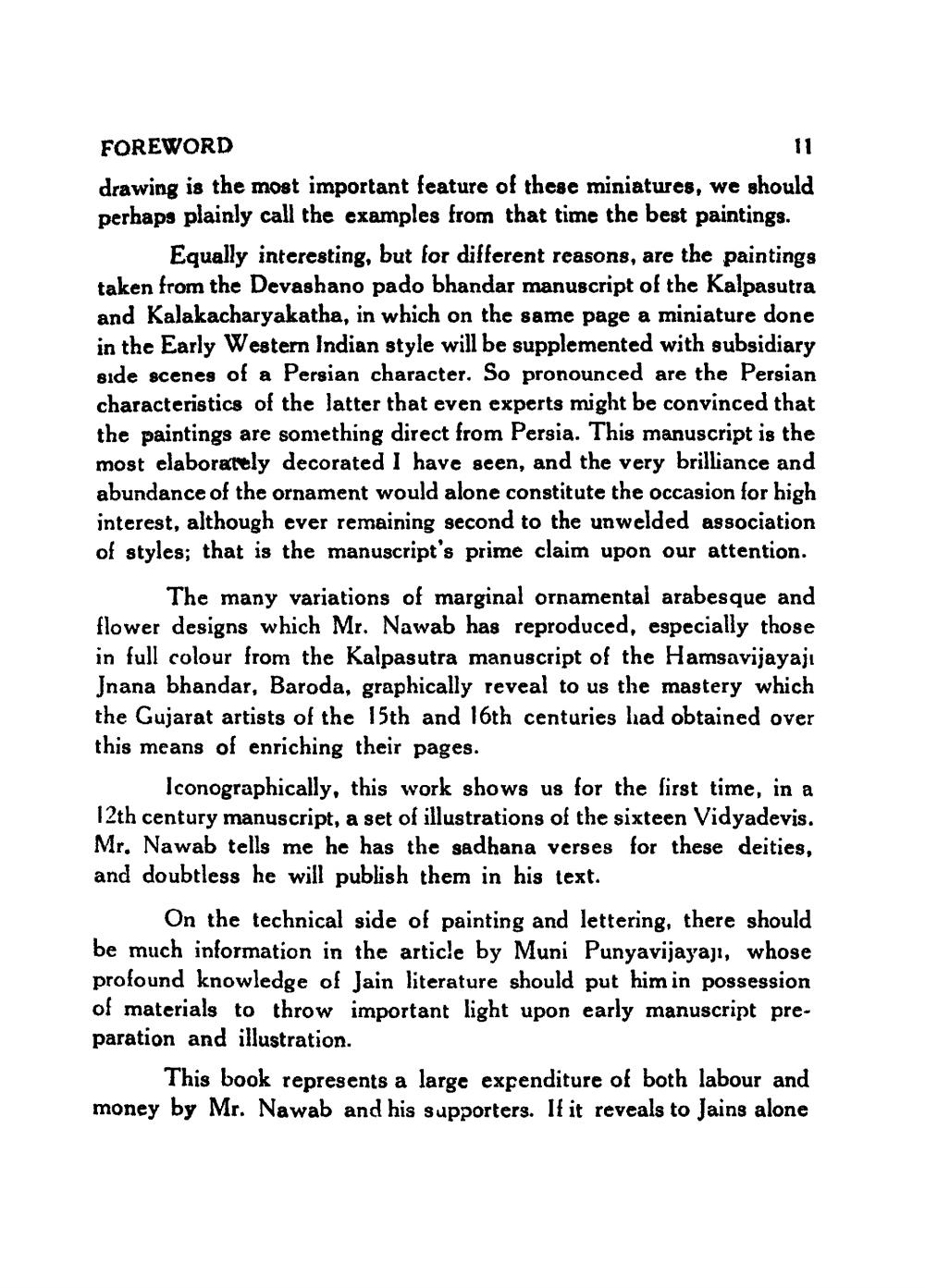________________
FOREWORD
11
drawing is the most important feature of these miniatures, we should perhaps plainly call the examples from that time the best paintings.
Equally interesting, but for different reasons, are the paintings taken from the Devashano pado bhandar manuscript of the Kalpasutra and Kalakacharyakatha, in which on the same page a miniature done in the Early Western Indian style will be supplemented with subsidiary side scenes of a Persian character. So pronounced are the Persian characteristics of the latter that even experts might be convinced that the paintings are something direct from Persia. This manuscript is the most elaborately decorated I have seen, and the very brilliance and abundance of the ornament would alone constitute the occasion for high interest, although ever remaining second to the unwelded association of styles; that is the manuscript's prime claim upon our attention.
The many variations of marginal ornamental arabesque and flower designs which Mr. Nawab has reproduced, especially those in full colour from the Kalpasutra manuscript of the Hamsavijayaji Jnana bhandar, Baroda, graphically reveal to us the mastery which the Gujarat artists of the 15th and 16th centuries had obtained over this means of enriching their pages.
Iconographically, this work shows us for the first time, in a 12th century manuscript, a set of illustrations of the sixteen Vidyadevis. Mr. Nawab tells me he has the sadhana verses for these deities, and doubtless he will publish them in his text.
On the technical side of painting and lettering, there should be much information in the article by Muni Punyavijayajı, whose profound knowledge of Jain literature should put him in possession of materials to throw important light upon early manuscript preparation and illustration.
This book represents a large expenditure of both labour and money by Mr. Nawab and his supporters. If it reveals to Jains alone




